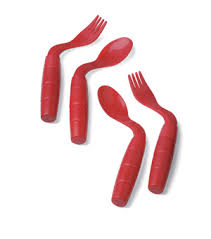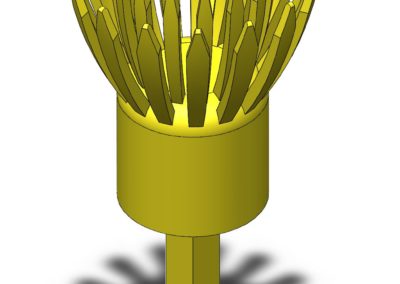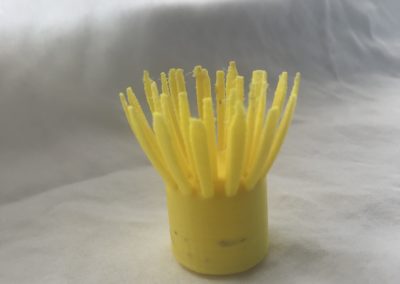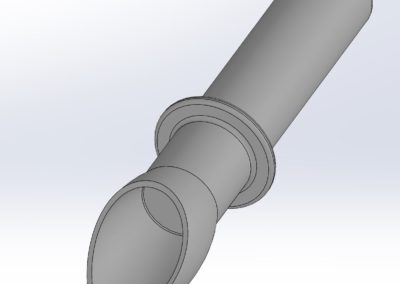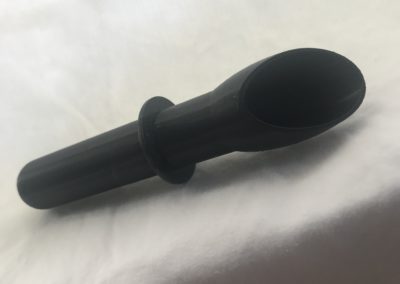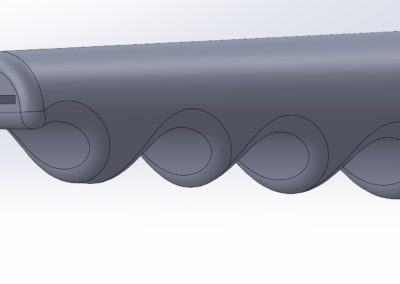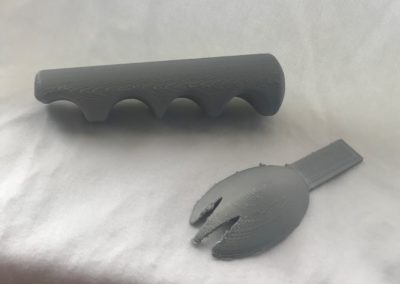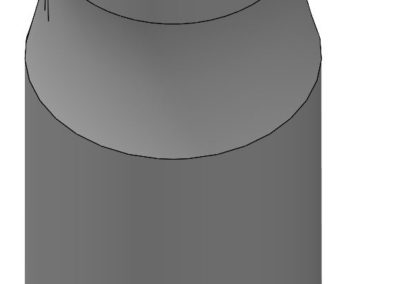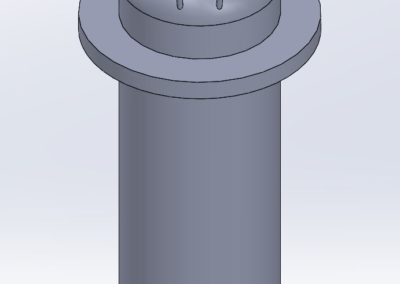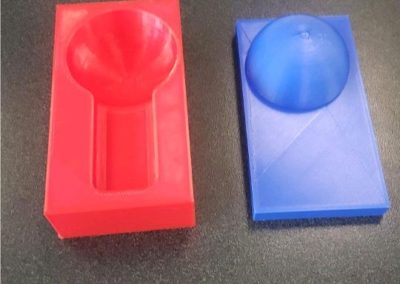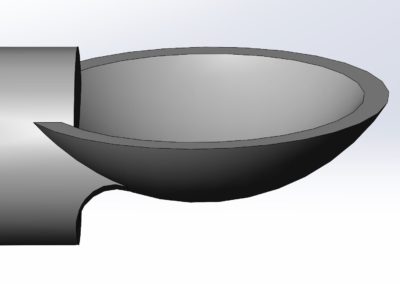Adaptive Eating Utensil
Overview
Project Overview
Tamara and Birkley, a mother and daughter living in Golden, CO, have been looking for a solution to help Birkley eat independently. Birkley has Cerebral Palsy (CP) which affects her neuromuscular control and some cognitive functions. Birkley’s CP makes everyday tasks virtually impossible without assistive devices. Tamara approached the HCDS to design eating utensils that would allow Birkley to eat independently because current adaptive eating utensils on the market have not been completely effective. In preliminary meetings with Tamra, she shared some ideas to help guide our design process. As a team we set out to achieve these objectives:
- Safe – No sharp tines or corners
- Easy to use – Both in picking up food and keeping the food on the utensil throughout the eating motion.
- Comfortable Grip – Ergonomic handle that was easy to grip.
- Easy to Manufacture – In case of broken utensils the design needed to be easily replaceable.
- Properly Weighted – Well balanced and roughly 6 0z.
- Easy to clean – Pick material that can be cleaned by hand easily and avoid hard to reach spots.
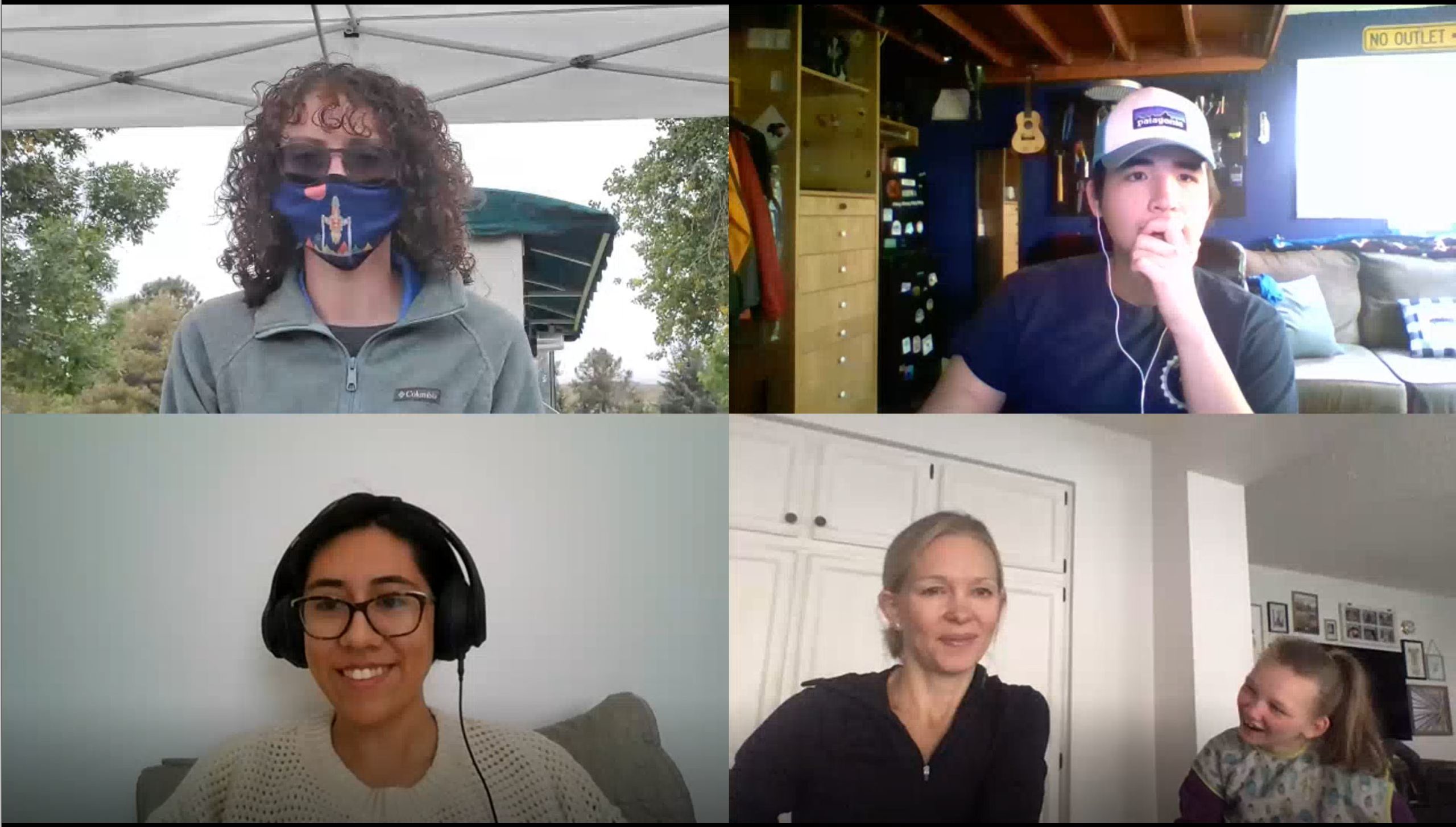
Live Zoom Chat
Use the link below to join us live from 8:00 – 10:30 a.m. on April 29.
Join from PC, Mac, Linux, iOS or Android: https://mines.zoom.us/j/9972734418?pwd=WkhZS1FkNlVCRDVISVFMczZpaXhaUT09
Please use passcode: Spring2021
Team Members
- Ryan Evans
- Michael Rickert
- Gabby Ferro
- Tanya Escobedo
The Client
- Tamra & Birkley Logan
Acknowledgements
Project Advisor: Prof. Chelsea Salinas
Technical Advisor: Dr. Joel Bach
Video
Elevator Pitch
Our clients are Tamra & Birkely Logan, a mother and daughter from Golden, Colorado. Birkely has a condition called Cerebral Palsy which makes much more difficult for her to eat independently. As such Tamra has found that current utensils on the market do not adequately satisfy their needs. These needs included safety and ease of use, a comfortable and properly weighted handle and easy to clean and manufacture. We began with three initial designs that we prototyped included a 3D fork, an ice cream scooper spoon and a modular spork and handle design. After gathering feedback and new ideas from our client, The team started the design process by brainstorming new designs and modeling them in Solidworks. The models were then 3D printed at Mines and sent to Tamara and Birkley for further testing. Our client expressed interest in the Forkupine design and the team then began reiterating and improving the previous designs.
Our final designs include the Forkupine and 3D printed spoon mold. The Forkupine allows for quicker manufacturing with 3D printing, a higher food retention rate and easier access for cleaning. Verification and FEA analysis was also used to verify durability and strength of the tine design to help predict the its durability. We also wanted to explore other forms of material that were not possible with 3D printing. In order to test non printable materials such as rubber silicone, we created a mold that would allow us to test different materials that offers the desired flexibility that our client expressed but also the rigidity that would make such a design feasible.
The next iterations will focus on implementing clients feedback about ergonomics, weight distribution, easy of use and safety. Rigorous testing will then be needed to test the iterations on its durability and its longevity to ensure a utensil that will last and not easily break. Future generations of the design hope to include a reliable, repeatable and cost-effective manufacturing process so the utensil can be replaced easily in the case of it being lost or broken. The utensil will be an ongoing process where communication and collaboration with the client is essential to arrive at a final product that meets all the required specifications.
Design Approach
At the beginning of this process, our team generated potential utensil designs that would meet both Tamra and Birkley’s original specifications and later create low fidelity prototypes that would be narrowed down with a design matrix. The factors that we decided to focus on included: ease of use, cost, safety, weight and ease of manufacturing. The designs we decided to focus on consisted of a porcupine-like fork, a modified spork and ice cream spoon design. On the other hand, we opted for a simple rounded handle as the client only stated width was the only issue with regular utensils.
Our next goal was to create medium fidelity prototypes that we later tested under different conditions to address the main concerns the client initially expressed: safety and ease of use. To facilitate manufacturing, 3-D printing was utilized due to its ease of use and cost. Manufacturing each utensil also helped to highlight a well-known issue with 3-D printing: bacterial buildup.
Keeping this in mind, we created two tests that were user-based and would evaluate the ease of use and food retention capability of each utensil. These tests consisted of an eating test restricted with resistance bands as well as a rigorous shake test. A piercing test with each utensil’s tines paired with a known weight in polymer modeling clay also determined the safety of each utensil based on the resulting depth. The results of these tests helped us understand that there was a possible inverse correlation between the food retention of a utensil and how easy it was also for the user to access food.
Utilizing FEA analysis also proved to be useful in identifying possible areas of failure. One of these points included the attachment point between the head of the utensils and the utensil handle. As a result, we determined that designing the utensils to be uniform would help facilitate manufacturing as well as mitigate these points of failure.
Throughout the iteration portion of the design process, we also gained client feedback from Tamra and Birkely that would give us a better understanding of the disadvantages of each utensil idea. Some included the size of the utensil head, the originality of each design as well as the rigidity that using a PLA plastic offered that in certain cases greatly limited Birkely’s ability to eat with the utensil. Additionally, Bacterial build-up soon became a factor we had to also consider when considering the long-term use of the utensil. As such we opted for a food safe rubber silicone which are originally used in the manufacturing of chocolate molds that could be cast within a 3-D printed mold, mitigate bacterial buildup and offer the client a utensil that was more comfortable to use.
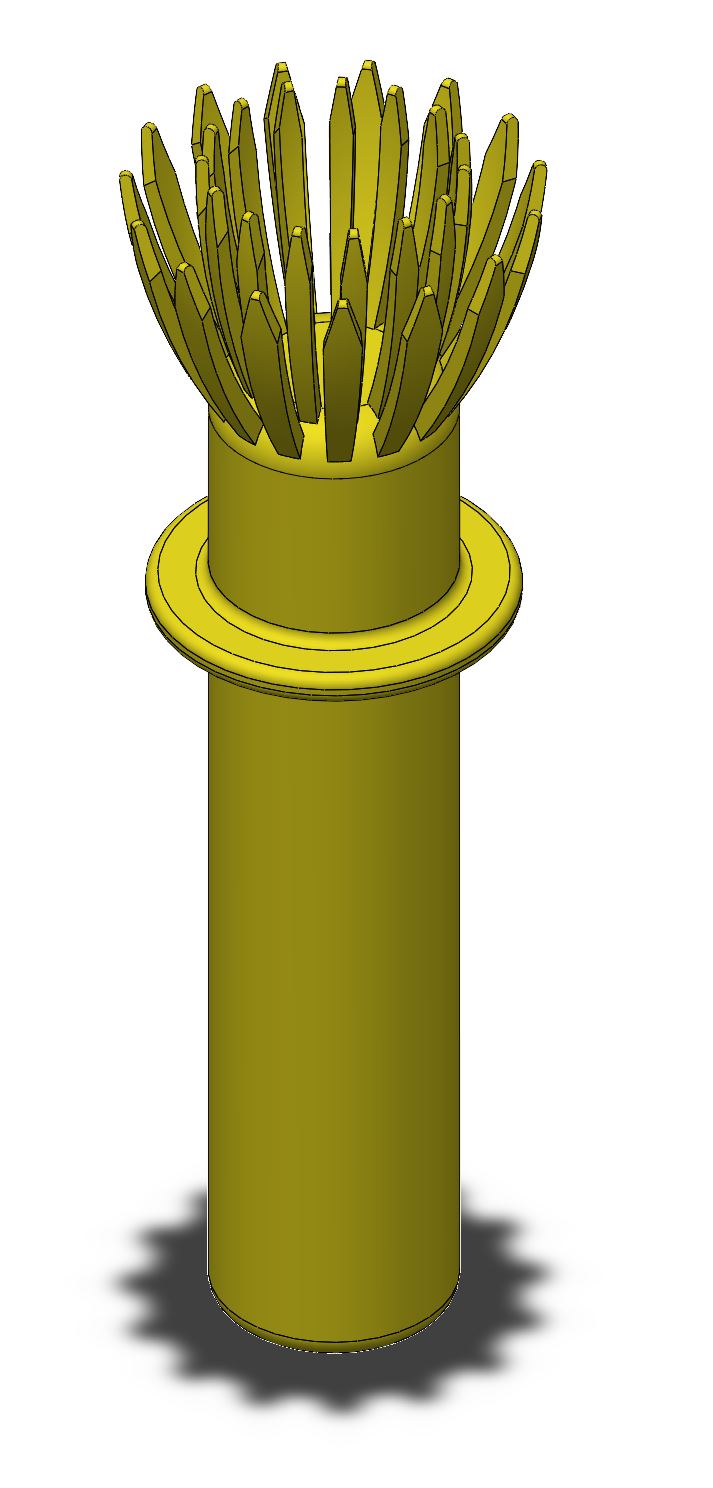
Design Solution
Opting for a rubber silicon material allowed us to further modify two utensil designs our client expressed interest in during their client feedback: the porcupine inspired fork utensil and a modified spoon that was within our original designs. However, these designs were not without some faults that needed to be addressed. Through the manufacturing and testing process of the forkupine, the tines of this utensil proved to be quite fragile and brittle. Additionally, having numerous tines increased the difficulty of manufacturing the utensil head as well as making the process of cleaning the utensil much more limited.
Our team iterated the design of the forkupine head to be much more accessible by reducing the number of tines and changing the tine material to be that of tempered stainless steel. These stainless-steel tines were then covered with a food safe and moldable Silicone. The advantages of this material selection offered a utensil that was much more flexible, strong, durable, and able to withstand cleaning in a dishwasher.
For the modified spoon, we went for a similar direction of choosing a food-grade rubber silicon (Smooth Sil 940) normally used casting chocolate molds that could be cast within a 3-D printed spoon mold. The advantages of this approach would allow us to create a utensil that would greatly limit bacterial growth, offer durability and more importantly much more flexibility within our utensil head.
While these designs are certainly an improvement to the original designs, there are still some caveats that we have yet to see with more rigorous testing as well as the actual durability of the utensil throughout an extended amount of time. A goal which the client has expressed they would like with the final utensil build. Therefore, further testing would have to be required.
Next Steps
Near the end of the semester, our team had begun to discuss practical and cost-effective manufacturing processes. Due to manufacturing timelines, the team was unable to test this configuration. Furthermore, different materials can be explored to increase the strength of the fork tines while keeping the desired flexibility intact. This would allow our client to easily have access to additional utensils if it were broken or lost. Further iterations of the design will incorporate a detachable handle so both spoon and fork attachments can be easily interchanged as well as redesigns to the handle shaft to allow for easy weight redistribution. The handle design will be complicated enough that the team decided to designate this as a second version of the current solution and to be released in the next prototype sometime next year.
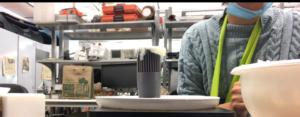
Meet the Team
Tanya Escobedo
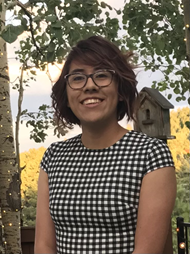
My name is Tanya Escobedo. I am a graduating senior in Mechanical engineering. I have always found the different aspects of engineering to be a challenging yet a rewarding experience throughout my time at Colorado School of Mines. My favorite part being the communication and collaboration I’ve had with various people of different backgrounds as well as interacting with different communities. HCDS has allowed me to build upon foundational skills such as Solid works, 3-D printing and even utilizing FEA analysis towards real-life situations while allowing students the opportunity to learn new skills that are imperative within leadership roles. Working as a project lead within this project has allowed me to learn how to communicate and collaborate effectively with my teammates as well as understand the various steps that are critical to the design process.
Ryan Evans

My name is Ryan Evans, and I am a senior in Mechanical Engineering who’s planning on graduating this May. Throughout my time at Mines, I have developed a love for rapid prototyping, and I have worked a lot with 3D printing, machining, and CAD. Working on the Adaptive Eating Utensil team has been a great experience as I have gotten the opportunity to apply my skills to a meaningful project that will help its user. Modeling and fabricating the utensils have reinforced my abilities in SolidWorks and 3D printing and being on a senior design team has given me the experience of working with other engineers who share the similar passions. Overall, the Human Centered Design Studio has allowed me to pursue a variety of interests through different projects and learn about different subsets within mechanical engineering.
Michael Rickert

My name is Michael Rickert. I am a senior in Mechanical Engineering who is graduating in December. During my time at Mines, I have found a deep appreciation in the design, prototyping and manufacturing processes that go into delivering a final product. Being a member at the HCDS and working with the Adaptive Eating Utensil team has been an amazing opportunity as their objective and values mirror my own and what I want to emulate as a future engineer. Being able to contribute alongside my teammates at the HCDS has shown me a different side of engineering and has allowed me to apply my technical skills I have learned as well as better my communication between fellow engineering students of different disciplines and backgrounds.
Gabrielle Ferro
 My name is Gabrielle Ferro. I have a bachelor’s degree in Mechanical engineering and currently pursuing a PHD. Being a part of this project has allowed me to work on various ideas with my team members that has given me the opportunity to further build upon my knowledge in Solid-works and 3-D printing prototyping.
My name is Gabrielle Ferro. I have a bachelor’s degree in Mechanical engineering and currently pursuing a PHD. Being a part of this project has allowed me to work on various ideas with my team members that has given me the opportunity to further build upon my knowledge in Solid-works and 3-D printing prototyping.
